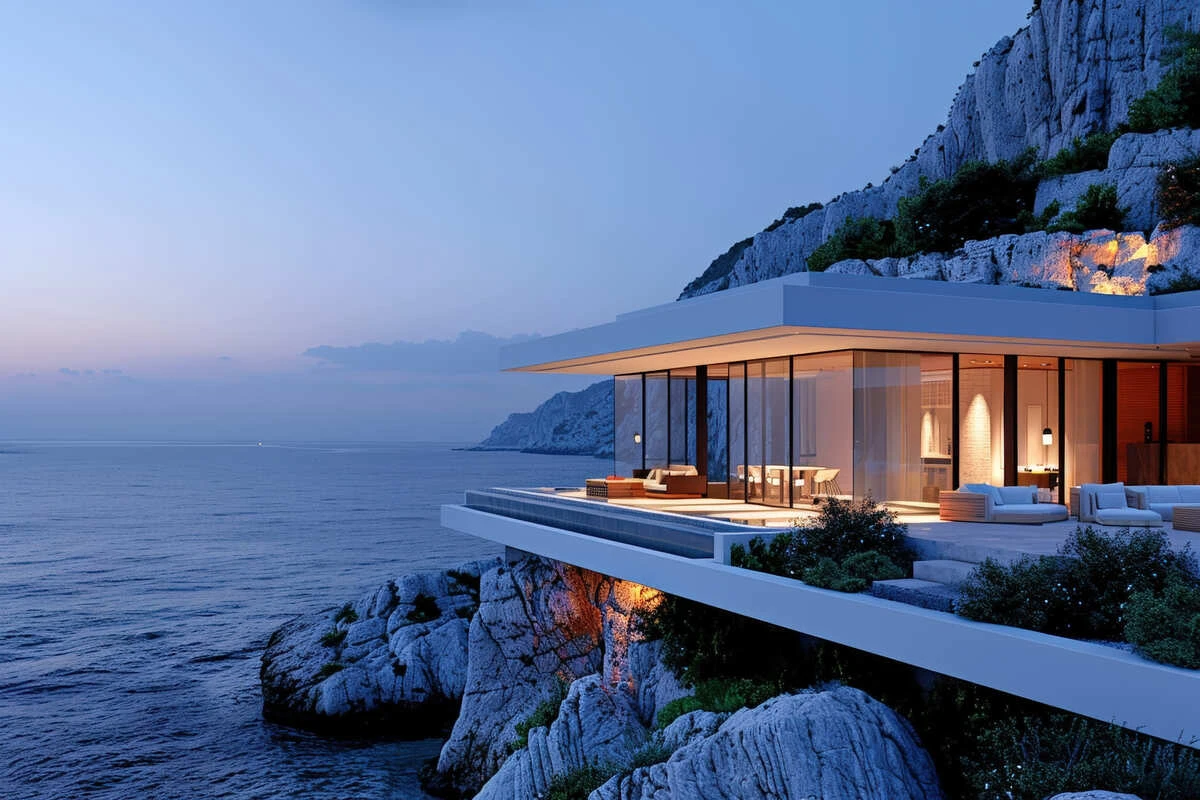The Future of Architectural Visualization: Trends in 3D Rendering
Today, architects, developers, and designers use advanced methods to transform the presentation of their projects as well as the way they conceptualize them. Three-dimensional rendering continues to be important in the architectural industry's advancement and will remain so in 2025 and in the years ahead. Let's take a more detailed look at those.
Top Trends in 3D Architectural Rendering

Here are the 3D rendering trends that change the industry:
- The best example is the application of AI in architecture, which is speeding up three-dimensional rendering processes. Optimizing AI lighting, materials, and textures speed the processes, which allows for greater realism.
- The emergence of real-time rendering software: In the field of architectural visualization, real-time rendering is considered to be of tremendous help. Architects can view the changes made to their design almost immediately as they make changes to lighting, textures, and arrangements.
- Use of VR and AR for interactive experiences is another example: Clients interact with architectural designs in a new spatial dimension, thanks to the intersection of VR technology and architectural visualization. Augmented Reality (AR) also contributes as designers and architects can put digital models on the existing physical space for more practical design evaluation. Are you interested in such technologies to apply them in your business? Visit the rendering agency website and order such services for yourself.
How 3D Rendering is Improving Architectural Designs
Architectural designs are improved greatly, and here are the key reasons:
- Improving Communication: Trends in architectural visualization shows that there is a new way of communicating that is rapidly being adopted by architects to interact with their clients, developers, and contractors. The use of sophisticated 3D models enables capture of design ideas in a way that there are no misinterpretations or more than one understanding of the project by every participant.
- Improving Design Precision While Decreasing Errors: With the use of 3D rendering, chances of making design errors reduces significantly. The complete visual representation of a project enables an architect to recognize problems that are difficult to identify in a 2D drawing, which helps to minimize construction errors.
- Helping Achieve Environmentally-Friendly and Energy-Conserving Designs: One of the most recent trends in 3D rendering is the ability to simulate and optimize the designs towards sustainable goals. Architects can now model structures with regards to energy consumption, exposure to sunlight and ventilation to ensure that they are energy efficient and environmentally friendly.
The Development of Architectural Rendering: What Is Expected In 2025
What to expect in 2025 and in the years to come?
- Improvements In Rendering Performed On The Cloud: Development in information technology is likely to provide architects with powerful rendering solutions through the internet without the need for specialized equipment. Such systems will facilitate remote collaboration and sharing of the rendering resources cheaply.
- Increased Accessibility of High-End Visualization Tools: Availability of sophisticated architectural animation technology is expected to increase with the growing demand. This will lower the prices of professional-quality rendering instruments and will make them affordable to smaller firms and freelance architects. This shift in technology will enable more professionals to utilize and enjoy the benefit of 3D rendering.
- How AI and Machine Learning Will Transform Architectural Modeling: In the near future, AI will go beyond simple rendering in architectural processes and integrate into the design stage itself. The machine learning algorithms capable of processing enormous amounts of information will recommend improvements to designs, optimize layouts, and forecast impacts of alterations in one part of a design to the rest of the project.
Final Thoughts: The Path to Adapting to 3D Rendering Changes
What can be said about the future of 3D rendering? Demand for visualization that provides an engaging experience and exceptional quality will escalate with the evolution in 3D rendering. Architectural visualization trends suggest the design will become more streamlined, cost-effective, accurate, and effortless due to AI interactivity.
There is an increased focus on real-time and more advanced tools. Designers, architects, and developers who adapt with prevailing trends will surpass in meeting the expectations of clients aligned with modern architectural designs.
The integration of AI in architecture, VR architectural visualization, and real-time rendering technologies empower professionals to not just remain in the competition, but take charge in shaping the future of architectural design.